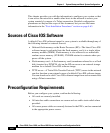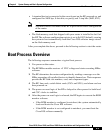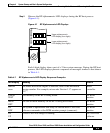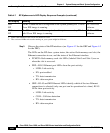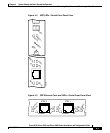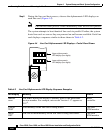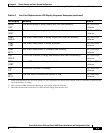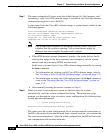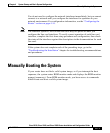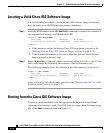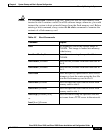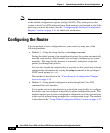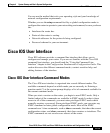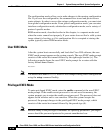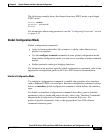
Chapter 4 System Startup and Basic System Configuration
Powering On the Router and Observing the Boot Process
4-10
Cisco 12010, Cisco 12410, and Cisco 12810 Router Installation and Configuration Guide
OL-11496-01
Step 7 The router automatically boots using the default image (if a flash memory card
containing a valid Cisco IOS software image is inserted in slot 0 and the software
configuration register is set to 0x0102).
As the router boots the Cisco IOS software image, a system banner similar to the
following appears:
Cisco Internetwork Operating System Software
IOS (tm) GS Software (GSR-P-M), Experimental Version
12.0(20010120:204554) [gha]
Copyright (c) 1986-2001 by cisco Systems, Inc.
Compiled Sat 20-Jan-01 18:34 by ghall
Note The system banner depends on the image version of the Cisco IOS
software that the system is running. Your system banner might be
different than the examples throughout this chapter.
• If the ROM monitor prompt (rommon>) displays, the router did not find a
valid system image or the boot sequence was interrupted, and the system
entered read-only memory (ROM) monitor mode.
In this case, you must boot a Cisco IOS software image manually by issuing
the boot command.
–
For information on locating a valid Cisco IOS software image, refer to
the “Locating a Valid Cisco IOS Software Image” section on page 4-12.
–
For information on using one of the various forms of the boot command,
refer to the “Booting from the Cisco IOS Software Image” section on
page 4-12.
• After manually booting the router, continue to Step 8.
Step 8 When you start an unconfigured system for the first time, the system
automatically starts the system configuration dialog. The interactive script
prompts you through the steps to create a router configuration file defining basic
system operation parameters.
--- System Configuration Dialog ---
Continue with configuration dialog? [yes/no]:
The router uses the system configuration file to activate network connections to
the RP so the router can be administered from a remote location, or to activate the
line card network interfaces. After the initial configuration, the RP and line cards
can communicate with external networks.



